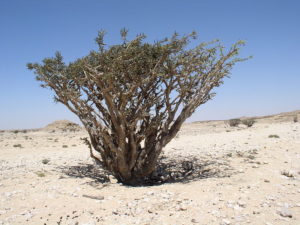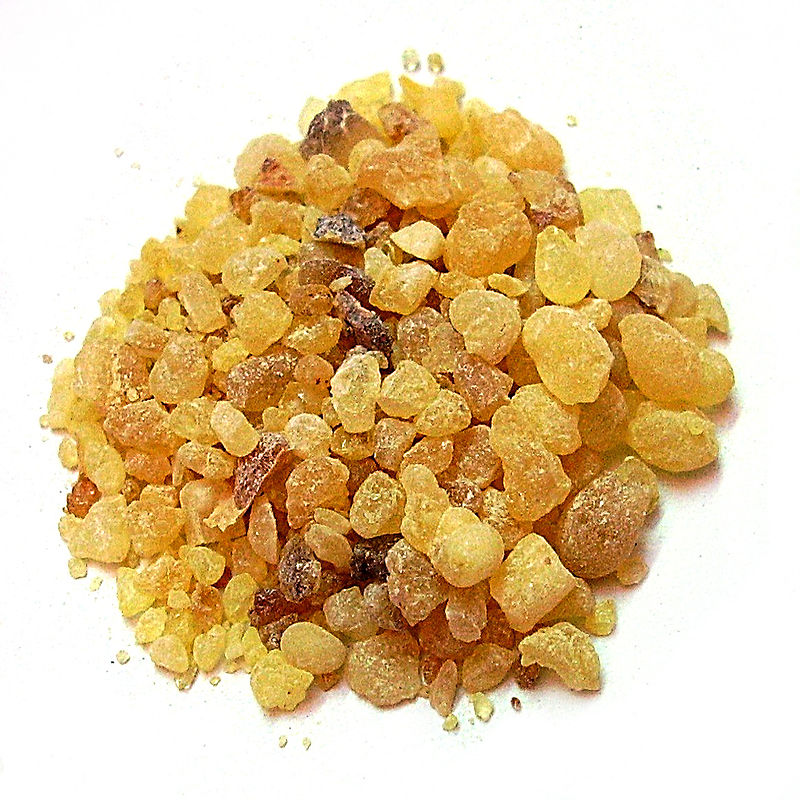 Frankincense is the dried resin from trees in the genus Boswellia. The preferred tree is Boswellia sacra. The resin has been traded and used for at least 5000 years. It appears in Egyptian murals and is mentioned in both the Bible and the Talmud. The resin was famously brought as a gift for the birth of Jesus. It was traded as far east as China. The Crusaders brought it to Europe. The name is not a reference to the Franks, (French) but as a reference to its quality as an incense.
Frankincense is the dried resin from trees in the genus Boswellia. The preferred tree is Boswellia sacra. The resin has been traded and used for at least 5000 years. It appears in Egyptian murals and is mentioned in both the Bible and the Talmud. The resin was famously brought as a gift for the birth of Jesus. It was traded as far east as China. The Crusaders brought it to Europe. The name is not a reference to the Franks, (French) but as a reference to its quality as an incense.
Frankincense is most often burned as an incense. It is also used in the traditional medicines of Africa and Asia.
Frankincense trees are native to arid parts of the Middle East, Africa and India. They are hardy in zones 10 and 11. The trees reach a height of 25 feet at maturity. They require full sun, heat and drought conditions. Poor, well-drained soil is a must. Trees can be tapped for their resin when they are 8 to 10 years old. They remain productive for up to 40 years.
Frankincense trees are endangered due to population expansion and climate change.
If you want to grow frankincense, you are better off purchasing a plant. The seeds are notoriously difficult to germinate. The germination rate of seeds purchased here in the US is 10% or less. In their native countries where fresh seed can be obtained, germination depends on how the trees are exploited. The seeds of trees that have never been tapped for resin germinate at a rate of 80% while seeds from trees that are tapped regularly only germinate at a rate of 16%.
To successfully germinate seeds, you will need well-drained soil and a light covering such as sand or powdered pumice. Place the seeds on top of the soil and cover them with the sand or pumice. Keep the soil constantly moist and the temperature at 90⁰F. A heat mat is helpful. Seedlings should start to appear as soon as 1 week or as late as three months so don’t give up!
Continue the constant moisture until the seedlings develop their second set of true leaves. At that point, you can cut back to once a week waterings.
To harvest the resin, cuts are made in the bark, two to three times per year. The resin oozes out and hardens. The hardened resin is harvested and sorted by hand. More opaque resins are considered higher quality.

